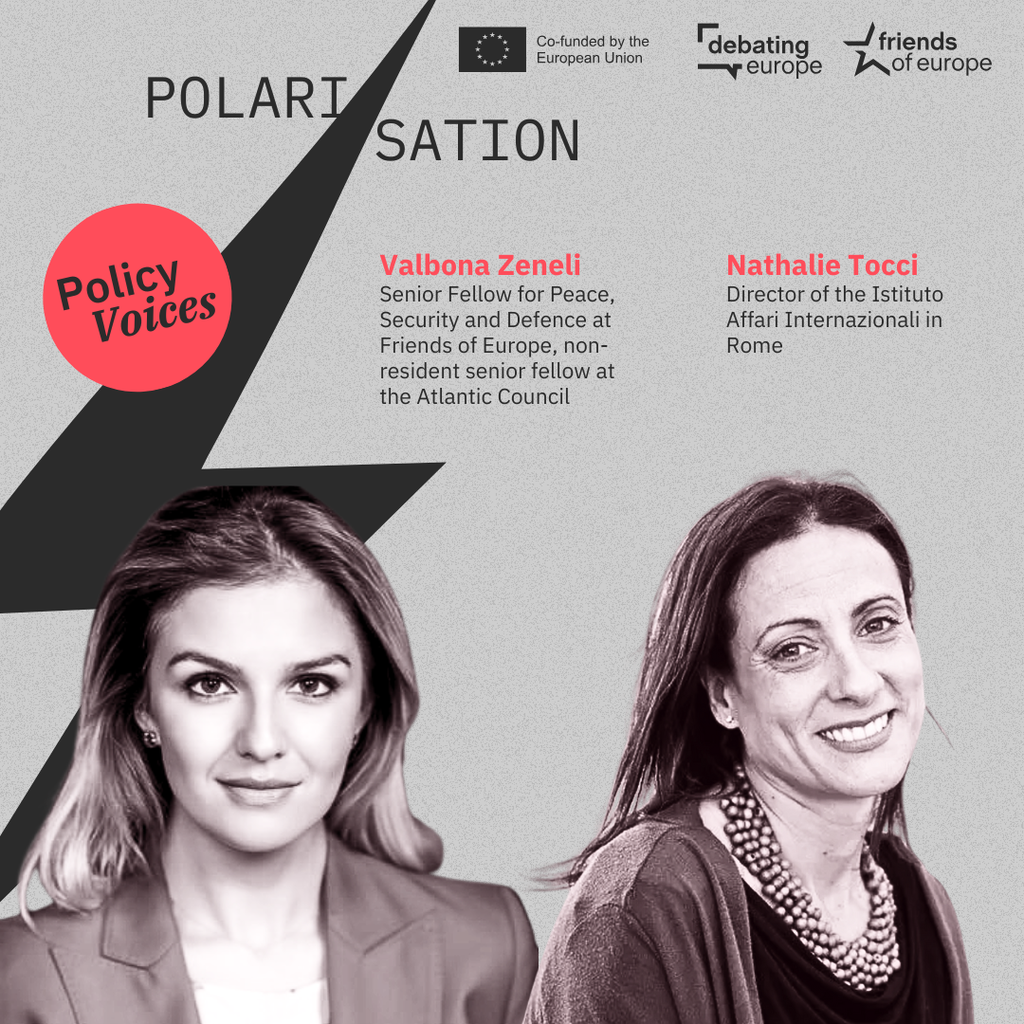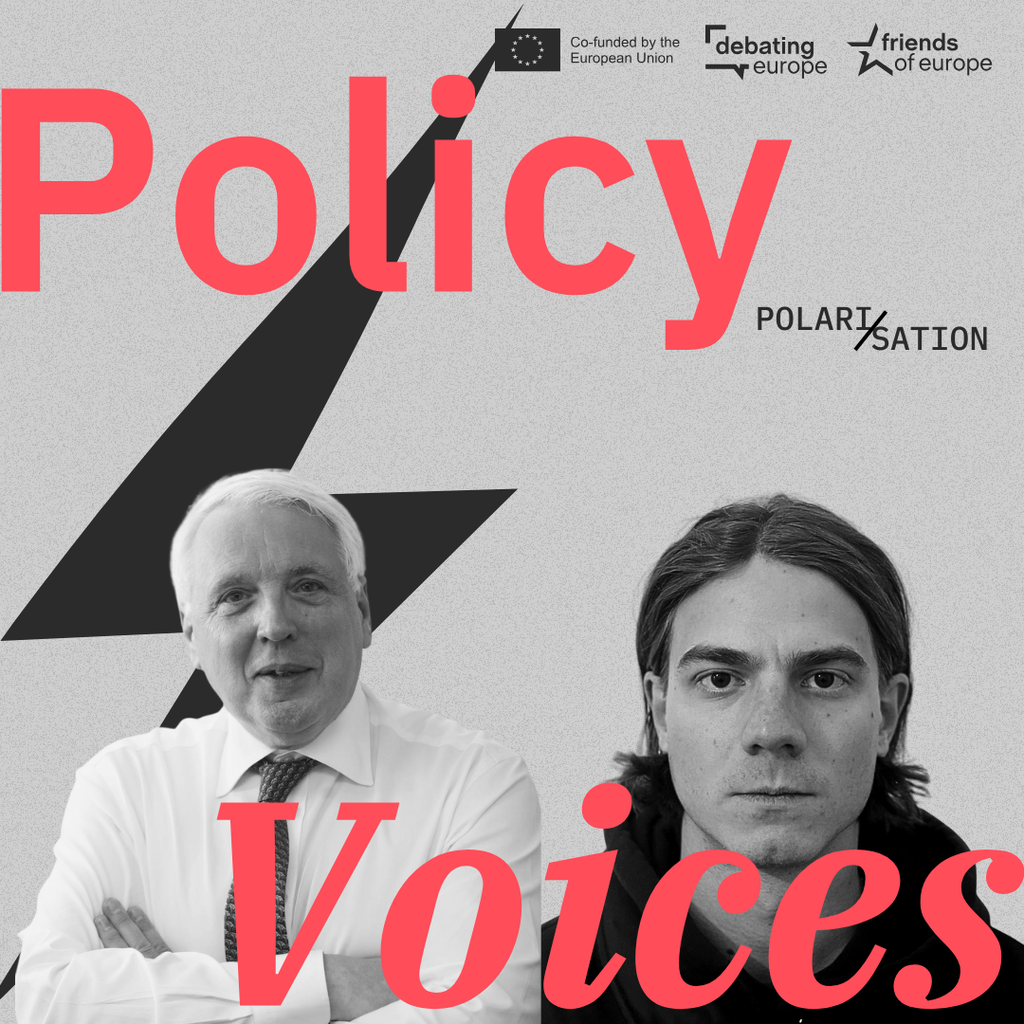From ambition to action: building Europe’s Defence Union
Past event In person

- Area of Expertise
- Peace, Security & Defence
Peace, Security & Defence

Senior Advisor at Defend Democracy, Lecturer at the Institute for Security Governance and former Senior Fellow at Friends of Europe.
Disinformation designed to disempower women is one of the oldest and most damaging forms of propaganda, and the history of disinformation against women is rooted in centuries of misogynistic attitudes and practices.
Throughout history, women have been subjected to a wide range of false, defamatory and often maliciously intended narratives that have been used to undermine their credibility, abilities and even recognition of their existence as humans. In ancient times, the symbols of goddess were defamed and demoted, since male supremacy first had to be established in religious beliefs because, for much of history, religion was law and culture.
In this way, religious and cultural beliefs were shaped to justify discrimination and oppression. Throughout history, women have been denied access to education, property and other rights on the grounds that it is ‘God’s will’ or ‘the natural order of things’.
For example, many today still believe the myth that Mary Magdalene was a prostitute when there is no evidence that she was anything but a very devout follower of Jesus Christ and perhaps even the sole female apostle. But a pope described her as a “sinful woman” in the year 591 and this falsehood spread throughout the Christian world.
Women posed a threat to the stability of a society
Despite the Roman Catholic Church correcting the record 1,378 years later in 1969, the negative impact remains with many still believing this myth. We can only wonder what the role of women in Christianity would be today had this falsehood not been sustained for so long. This is but one example of how disinformation is the plastic waste of the information sphere; it lasts for hundreds of years and continues to pollute the atmosphere.
In the Middle Ages, women were often portrayed as morally and intellectually inferior to men, and any female success or power was regularly attributed to witchcraft or demonic forces. This created a superstitious fear of women’s potential and led to the belief that women posed a threat to the stability of a society, causing women accused of witchcraft to lose their property or even their lives.
In the early modern period, disinformation against women was often used to justify their exclusion from politics, education and other public spheres. Women were portrayed as too emotional to reason rationally and as a threat to the social order, while men were simultaneously starting wars and waging pogroms.
Disinformation was often used to depict women as too weak and frail to be trusted with political power
In the 19th century, disinformation against women was employed to deny them the right to vote and be involved in the political process. Disinformation was often used to depict women as too weak and frail to be trusted with political power, or as too irrational and emotional to be trusted with decision-making.
In the 20th century, sexist stereotypes were employed to limit women’s roles in the workplace and domestic life. Women were portrayed as being inherently unsuited for higher-level positions and as having no place in the public sphere. These narratives were often supported by the misuse of science.
In recent history, disinformation against women has continued to be a pervasive and persistent problem. While women have made significant progress in terms of gaining legal rights and social equality, there are still many forms of disinformation that are used to undermine and discriminate against women. In some cases, these narratives are even monetised via online adverts.
Today, despite the proven accomplishments of women as heads of state, scientists and leaders in many fields, disinformation against women is still used to deny women equal rights and opportunities. The echoes of false themes from centuries’ past can still be heard today.
Women of colour are depicted as hypersexualised and dehumanised with their appearance and behaviour falsely caricatured as a threat
These false narratives about gender roles, power dynamics and sexuality are still undermining women’s autonomy and agency. Their impact is seen in recent polls by the Reykjavik Index for Leadership, which shows that bias against women leaders is increasing, with younger adults believing in women less than their own parents.
Another common form of disinformation against women in recent years has been the use of political propaganda and other forms of mass media to spread false or biased information. This has included the use of media to portray women in demeaning ways, as well as the use of media to attack and discredit women who hold positions of power or influence.
For example, recently Finnish Prime Minister Sanna Marin and New Zealand Prime Minister Jacinda Ardern, two of Western democracy’s leading lights, were questioned by the media if the reason for their meeting was their gender or age. It’s hard to imagine German Chancellor Olaf Scholz and French President Emmanuel Macron being asked the same question.
When it comes to women of colour, disinformation takes an even uglier tone as was the case with French justice minister Christiane Taubira in 2013 when her humanity was questioned by a member of an opposing party. In other cases, serious and learned women of colour are depicted as hypersexualised and dehumanised with their appearance and behaviour falsely caricatured as a threat to the social order.
The history of disinformation against women has been marked by the continued use of false and misleading information
Overall, the history of disinformation against women has been marked by the continued use of false and misleading information, reinforced by centuries of false narratives to undermine women’s rights and equality. While there have been positive developments in recent years, such as increased awareness and efforts to combat disinformation against women, this remains a significant challenge to address in order to remove the last barriers to equality.
There are many potential solutions for addressing disinformation against women and the best approaches will be led by women themselves. By tapping into the wisdom of the women who lead societal efforts to support and defend democracy, a clear list of solutions emerges:
“Disinformation about the roles that women can have in society [and] about the cultural norms that stifle them should be addressed early on, and in all aspects of society: families, schools, religious structures, community centres, sports establishments, media, government policies. If educational campaigns and dialogue initiatives about internet security and the dangers of smoking can be adapted to be age-appropriate and culturally appropriate, so too can campaigns that challenge societal norms that stifle and damage women’s identity, growth, power and ultimately their enormous contributions to society,” contends Miriam Fugfugosh, a global leadership educator based in Geneva.
“We cannot let algorithms polarise our societies until shared reality is gone and democracy is dead”
Alice Stollmeyer, Founder and Executive Director of Defend Democracy, a transatlantic civil society organisation, maintains: “Women politicians and female public personalities often think that online hate and disinformation against women ‘comes with the job’. But we should never accept hate, lies, propaganda and information manipulation as a given. When looking at the bigger picture of our broken information space, it is clear that foreign, domestic and technological threats to democracy go hand in hand and reinforce each other. So we need to tackle this challenge in a coherent way. Because the causes of the ‘information disorder’ are many, there is no silver bullet solution. But a key action to take is for democracies to team up and disrupt polarisation as a business model of Big Tech platforms. We cannot let algorithms polarise our societies until shared reality is gone and democracy is dead.”
A defence professional based in Rome shares her perspective: “Patriarchy manifested as this kind of disinformation must be fought in its concrete manner, starting with the myths and stories that shape our culture. Looking at Eve as the cause of original sin, Elena as the cause of Trojan war, Penelope the beloved wife waiting for her husband at home while he was sailing around the world. These are all outdated concepts and clichés that must be shattered.
“In the present day, the first step to stop [disinformation] against women is let our children be free between domestic walls with no labels or set roles within the family; mother and father are interchangeable in domestic work and in everyday life. Through such early examples can we create a true gender balance in our culture and render disinformation against women ineffective.”
Hanna Linderstål, Founder and CEO of Stockholm-based Earhart Business Protection Agency, remarks: “Social media is the voice of the people and it’s also a playground for those who want to take advantage of our social cognitive behavior to gain power, influence opinions and control with disinformation; using bots and false accounts to create trends that we as humans want to follow. Our fear of missing out makes us easy to influence and control. The algorithms that feed our consciousness with more of what we looked at, feed our beliefs until it becomes true in our cognitive bubble. So I think strong regulations of these platforms is needed to stop the spread of disinformation against women and level the playing field so women and girls are judged for their ideas and character only.”
The views expressed in this #CriticalThinking article reflect those of the author(s) and not of Friends of Europe.
Past event In person

Next event In person & Livestreamed

Past event Online

Past event Online





Stay informed
We use cookies and similar technologies to adjust your preferences, analyze traffic and measure the effectiveness of our campaigns. Learn more about our privacy policy.